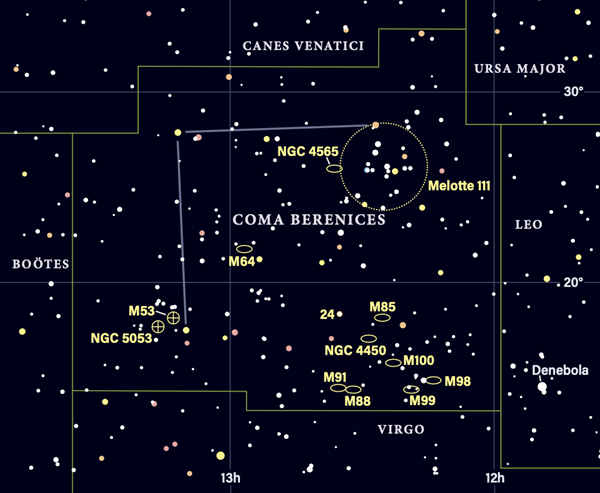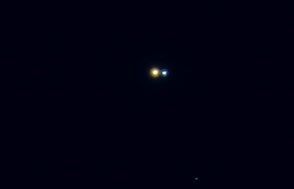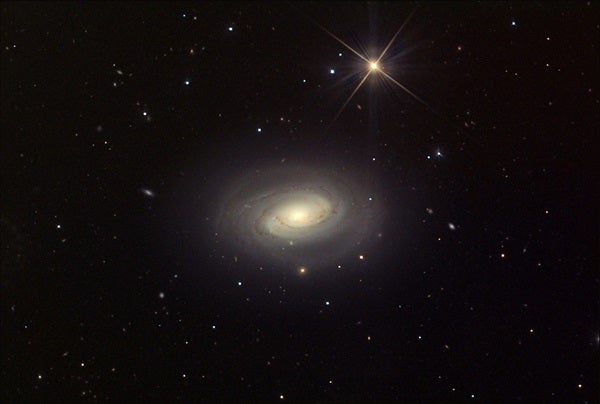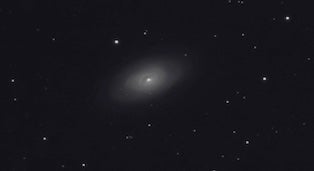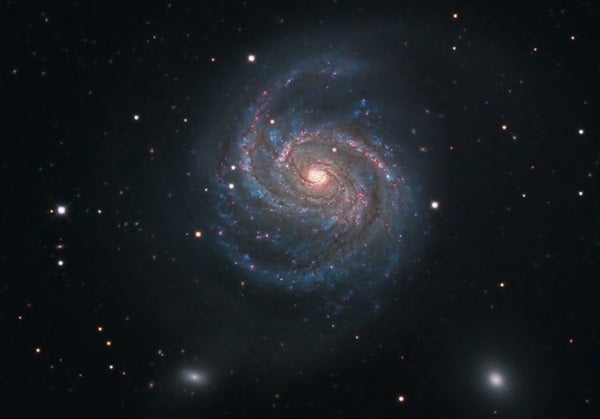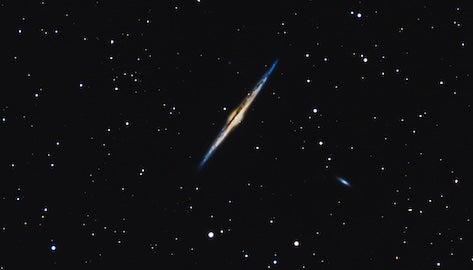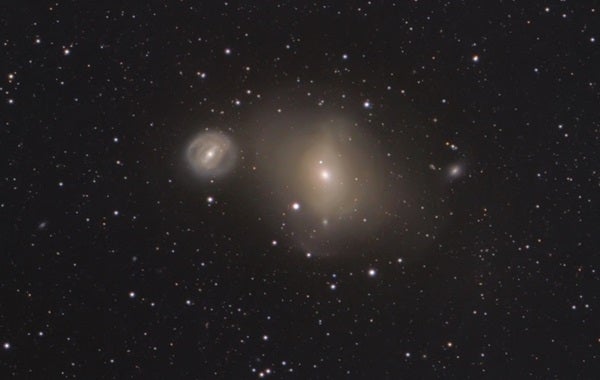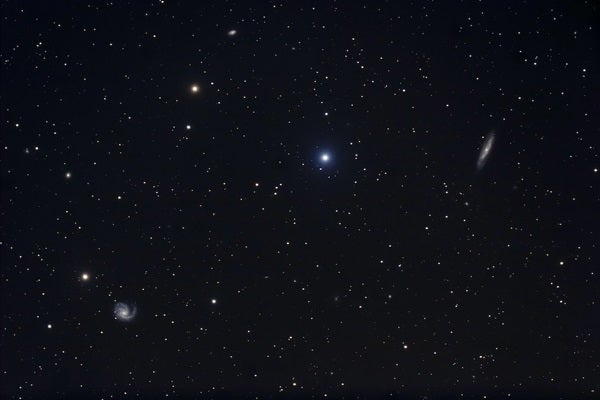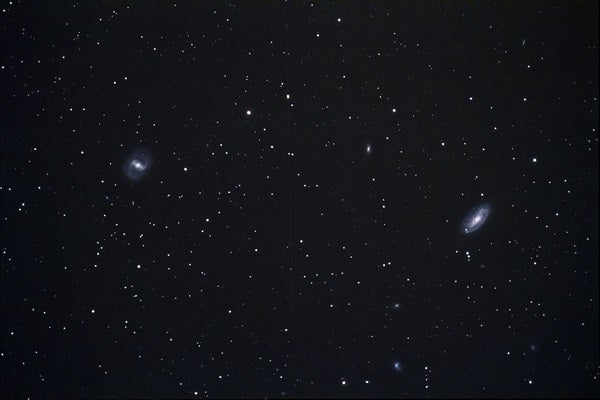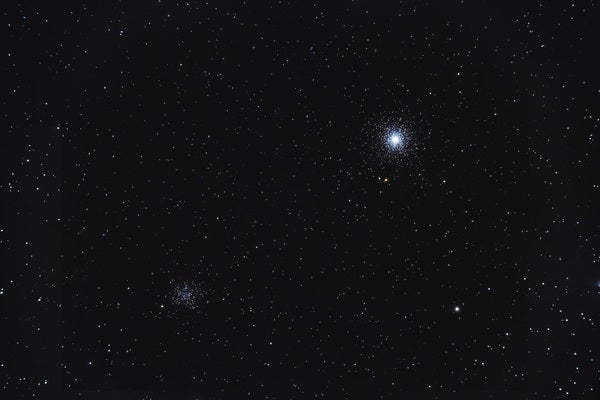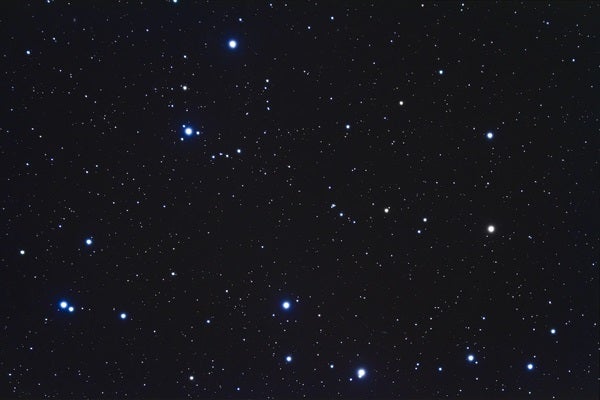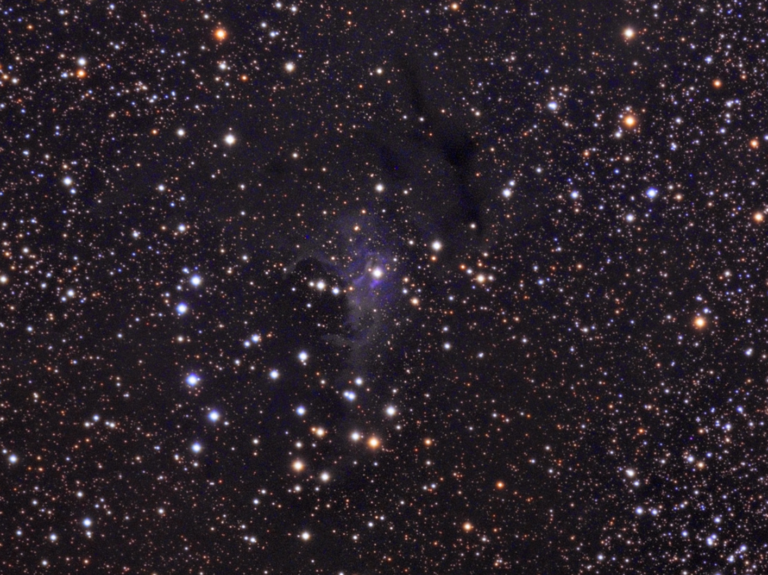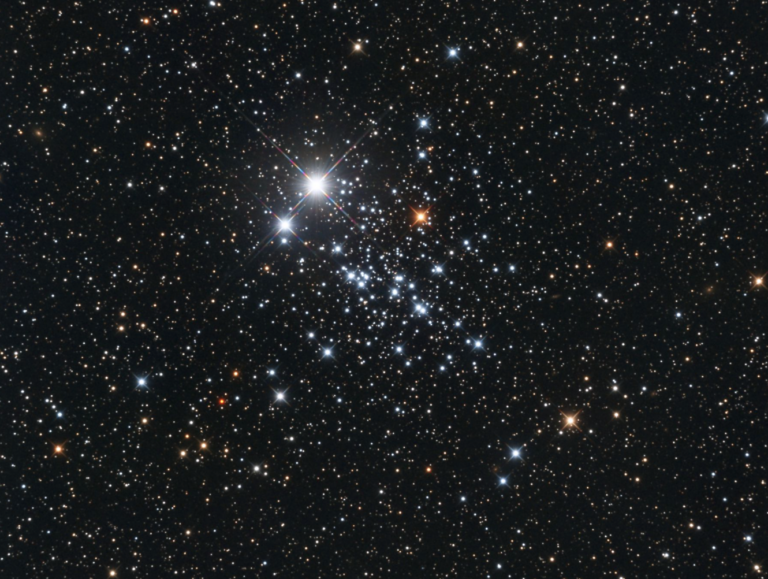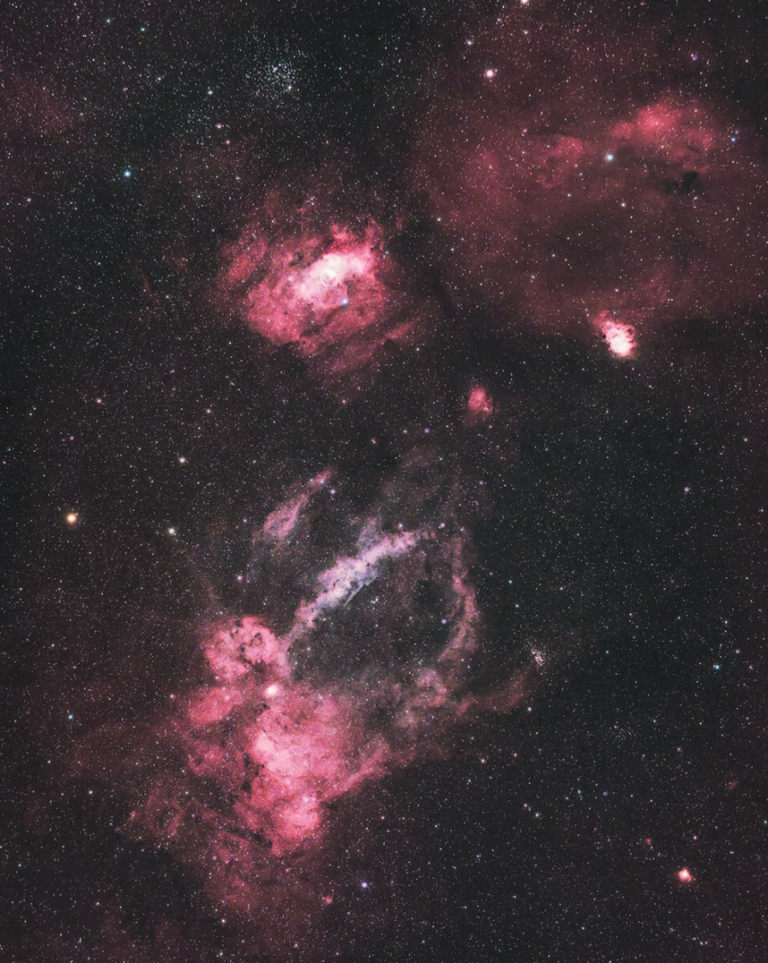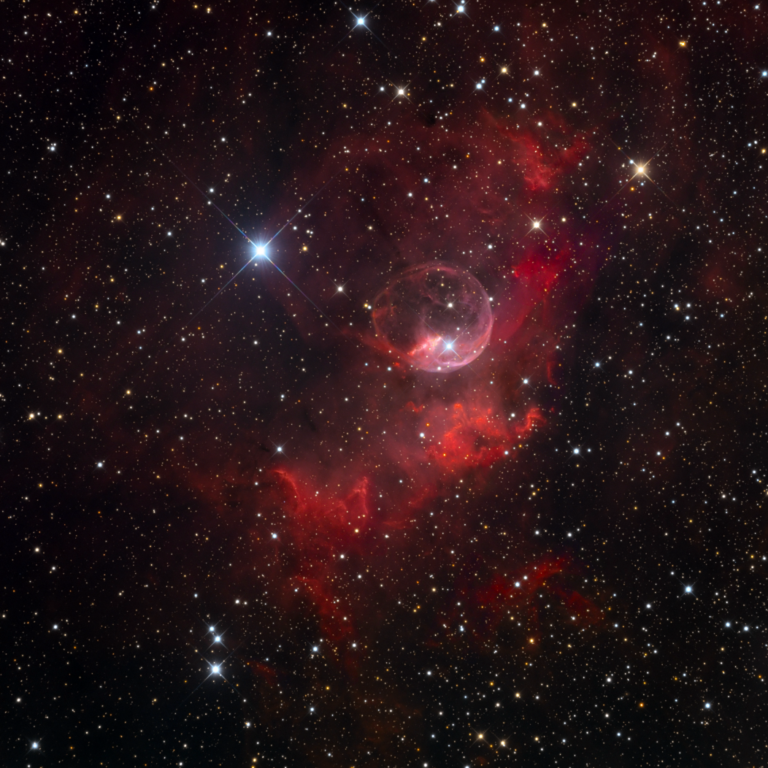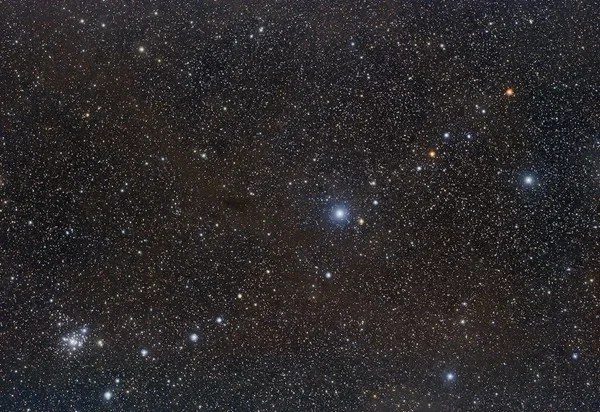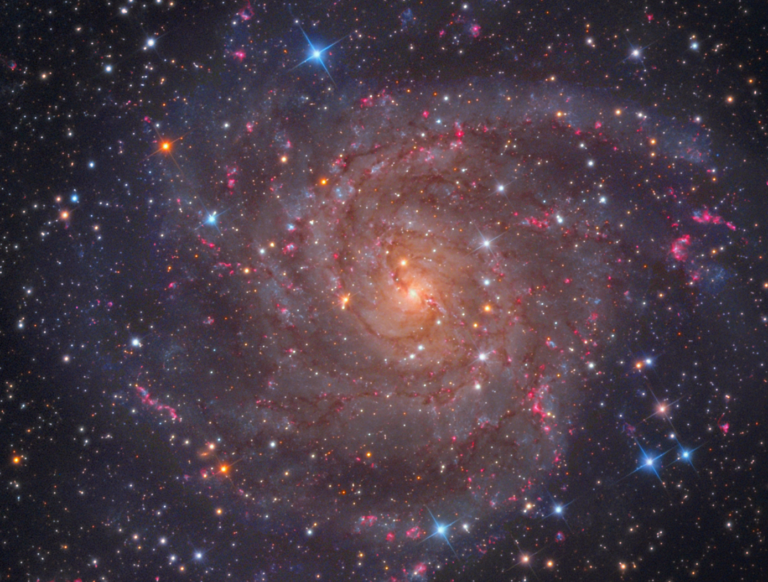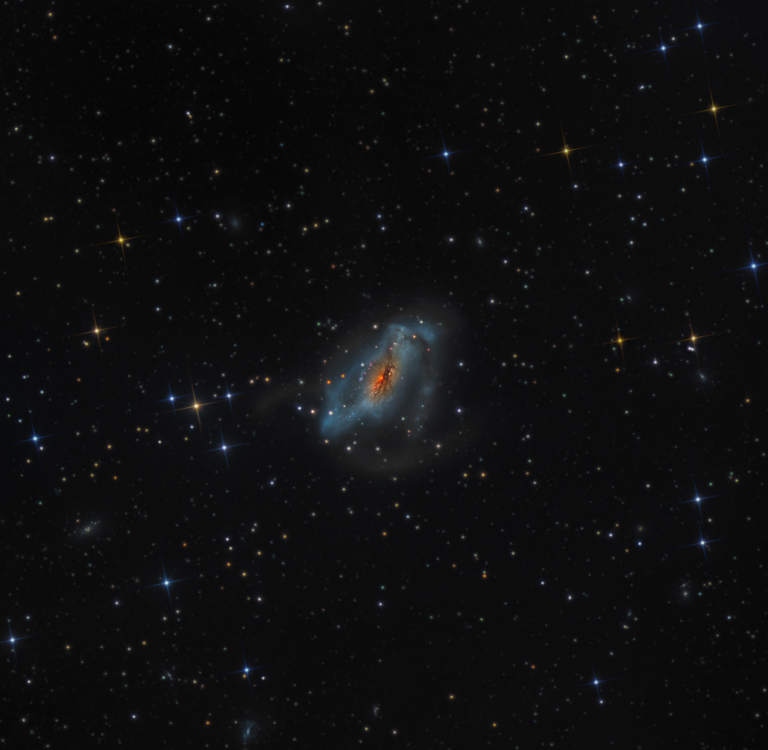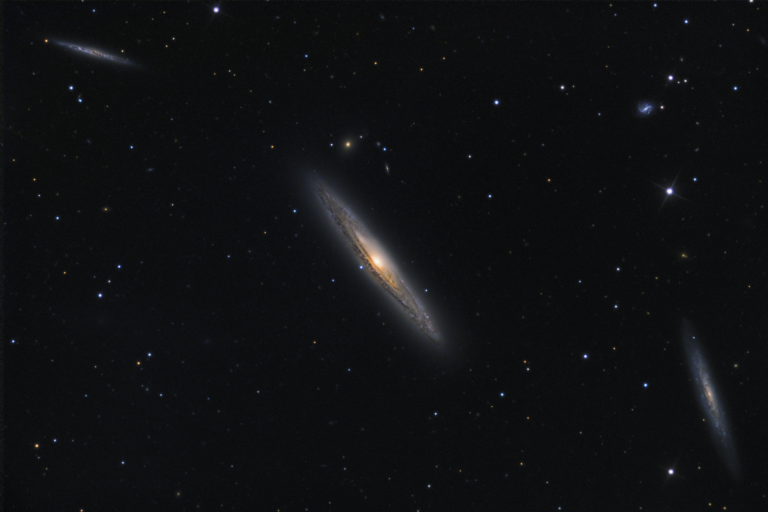The constellation Coma Berenices (pronounced KOE-muh-bear-uh-NYE-seez), Berenice’s Hair, was envisioned in its current form by Flemish cartographer Gerardus Mercator. To honor Queen Berenice II of Egypt, he placed these stellar locks on a celestial globe he designed in 1551. Unfortunately, Coma Berenices, which contains no bright stars, is not an easy star pattern to find. It’s visible only from midwinter through midsummer in the Northern Hemisphere. Its center lies at right ascension 12h45m and declination 23°30′.
Coma Berenices ranks 42nd in size out of the 88 constellations, covering 386.47 square degrees (0.937 percent) of the sky. And while its size is middling, it fares worse (57th) in terms of overall brightness.
The best date to see Coma Berenices is April 2, when it stands opposite the Sun in the sky and reaches its highest point at local midnight. The constellation is completely visible from latitudes north of 56° south, and it remains entirely invisible only between latitude 77° south and the South Celestial Pole.
Although this star pattern isn’t particularly expansive or bright, it contains no less than eight Messier objects, the third most of any constellation. You’ll also find lots of other worthy targets tangled up in Berenice’s Hair. Let your telescope adjust to the outside temperature, get comfortable, and spend an enjoyable night combing through the great deep-sky objects in Coma Berenices. Good luck
24 Comae Berenices
For a break from galaxies, seek out the double star 24 Comae Berenices. Its components glow at magnitudes 5.2 and 6.7 and are separated by 20″. Because people’s eyes differ in color acuity, some observers see yellow and blue, others see both as white, and still others see the pair as orange and green.
NGC 4450
To locate spiral NGC 4450, look just south of the midway point of the line that connects the stars 11 and 25 Comae Berenices. The galaxy is relatively bright (magnitude 10.1) and oval (5.0′ by 3.4′). A thick halo surrounds a stretched-out core.
M64
The Blackeye Galaxy (M64) got its name after William Herschel discovered its dark dust feature, which he compared to a black eye. That light-obscuring dust lane is prominent, but only when viewed through a 10-inch scope. M64 glows at magnitude 8.5 and measures 9.2′ by 4.6′.
M100
Spiral galaxy M100 ranks as one of the brightest galaxies (magnitude 9.4) in the Coma-Virgo cluster, so it’s a great target for amateur scopes. It lies not quite 2° northeast of the star 6 Comae Berenices. Through an 8-inch scope, the arms appear as bright regions to the east and west of the nucleus.
NGC 4565
No. 1 on any list of edge-on spirals is the Needle Galaxy (NGC 4565). It glows at magnitude 9.6 and measures 14.0′ by 1.8′. An 8-inch telescope reveals a streak roughly 10′ long that’s oriented northwest to southeast. To see NGC 4565’s full extent, move up to a 16-inch scope.
M85
At magnitude 9.1, lenticular galaxy M85 is one of the sky’s brightest galaxies. It lies 1.2° east-northeast of 11 Com. A 12-inch scope will reveal the brightness difference as you move out from the core, as well as the galaxy’s overall subtle yellow color. The smaller barred spiral galaxy to its left is NGC 4394.
M98 & M99
The magnitude 10.1 spiral galaxy M98 (upper right) measures 9.1′ by 2.1′. It lies 7.2° east of Denebola (Beta [β] Leonis). Through an 8-inch scope, its center looks broad and slightly brighter than its arms. And a larger telescope will reveal star-forming regions in those arms. The Pinwheel Nebula (M99) is actually a spiral galaxy sometimes called St. Catherine’s Wheel, a rather gruesome comparison considering the purpose of its namesake device. It glows at magnitude 9.9 and spans 5′ by 4.6′. Through a 10-inch scope, M99 appears to have only one arm. Go bigger to see the other two.
M88 & M91
Spiral galaxy M88 (right) resides in a region housing hundreds of other galactic tenants. Fortunately, at magnitude 9.6, it outshines them all. Through a 6-inch telescope, M88 is an oval haze more than twice as long as it is wide (6.1′ by 2.8′). A 12-inch scope at 300x will reveal some of the spiral’s structure. The easiest way to find the magnitude 10.2 barred spiral M91 (left) is to start at M88 and move 0.8° east. A 6-inch telescope shows a rectangular-shaped object a bit longer than it is wide (5.0′ by 4.1′). With a high-power eyepiece in a 12-inch scope, you’ll easily see its central bar.
M53 & NGC 5053
Globular cluster M53 (upper right) lies not quite 1° northeast of Diadem (Alpha [α] Com). It glows at magnitude 7.7, so a 4-inch scope will reveal several dozen of its stars. M53 has a diameter of 12.6′. And because few stars are near the cluster, you’ll have no trouble defining its edge. Globular cluster NGC 5053, which looks like an open cluster, lies in the same field as M53. It’s a bit smaller (10.5′) and, at magnitude 9.9, more than two magnitudes fainter. You’ll need an 8-inch telescope to resolve its stars, which form a rough triangle.
Melotte 111
The Coma Berenices star cluster (Melotte 111) contains some 40 stars between magnitudes 5 and 10. Their light combines for a total magnitude of 1.8. Because this object spans more than 4°, start with 50mm or larger binoculars. After that, move to your telescope and select your lowest-power eyepiece.

